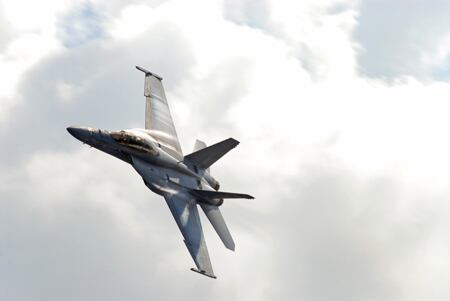A F/A-18C Hornet squadron attached to the carrier George H.W. Bush suspended flights for a week last month after two jet cabin pressure fluctuations were reported, Naval Air Forces officials confirmed Thursday.
At least one Strike Fighter Squadron 37 pilot was placed in the carrier’s decompression chamber in the latest so-called physiological episode, issues involving cabin pressure fluctuation and oxygen loss that have plagued and baffled Navy aviation across several air frames.
The flight pause, first reported by Fox News, started July 12 at the end of the flight schedule, according to Naval Air Forces spokeswoman Cmdr. Jeanette Groeneveld.
RELATED

After pilots met with leadership to discuss concerns, the squadron removed and replaced parts of the environmental control system on the squadron’s 10 Hornets, she said.
The pause was lifted on July 19, days before the carrier arrived in Haifa, Israel.
The squadron went on to take part in Exercise Saxon Warrior in the Atlantic this month.
VFA-37 cockpit issues are the latest in a series of oxygen system failures happening on different jets with alarming regularity, affecting not only Navy and Marine Corps F/A-18 Hornets, but also Super Hornets and EA-18G Growlers.
The issues have so far baffled Navy leadership.
“This is a complex issue with multiple causal factors that must be considered, and will likely involve multiple solutions,” Groeneveld said. “We’ve established a dedicated team of professionals from various fields to attack this complex issue, and we will stay after it until we fix it.”
Geoff is the managing editor of Military Times, but he still loves writing stories. He covered Iraq and Afghanistan extensively and was a reporter at the Chicago Tribune. He welcomes any and all kinds of tips at geoffz@militarytimes.com.




